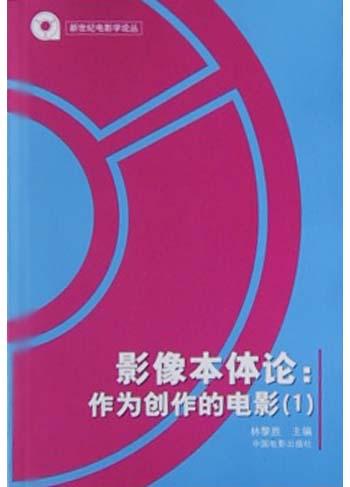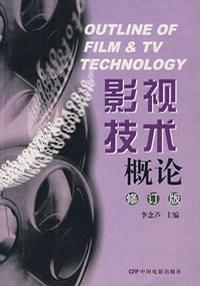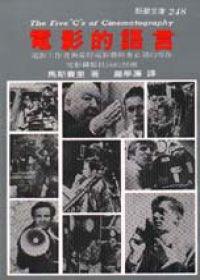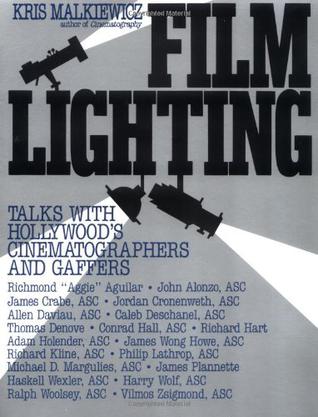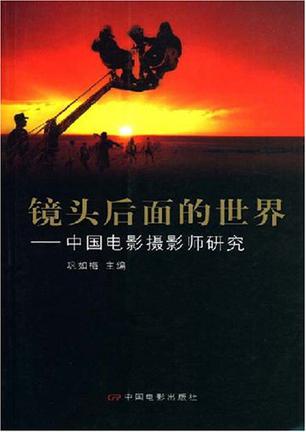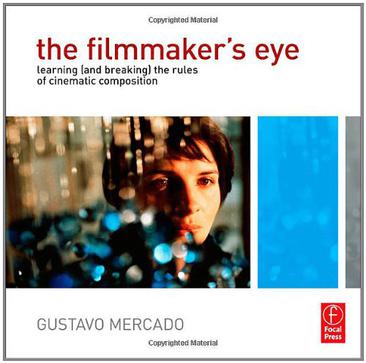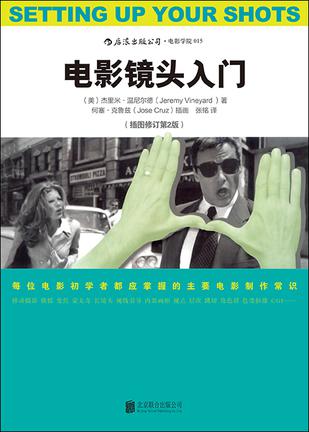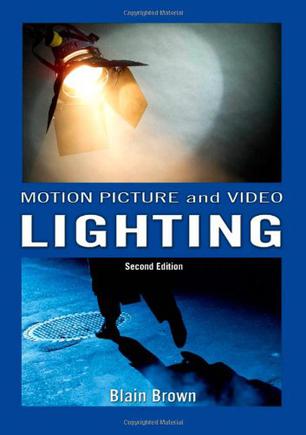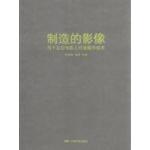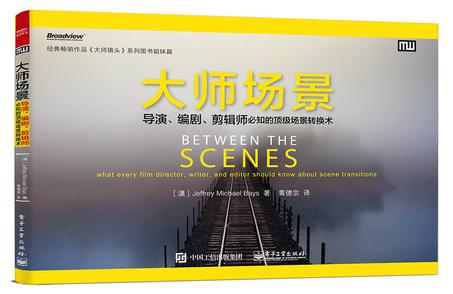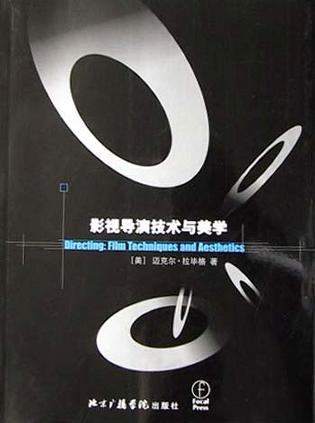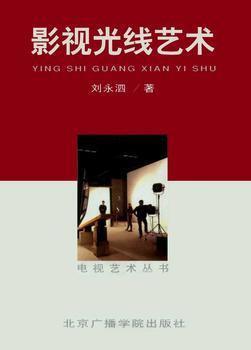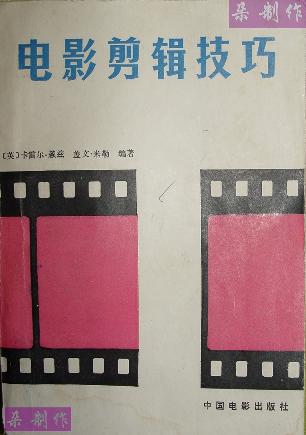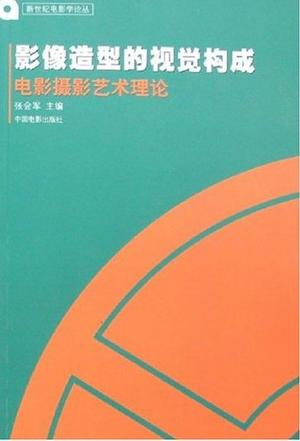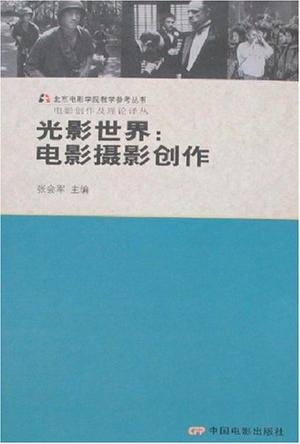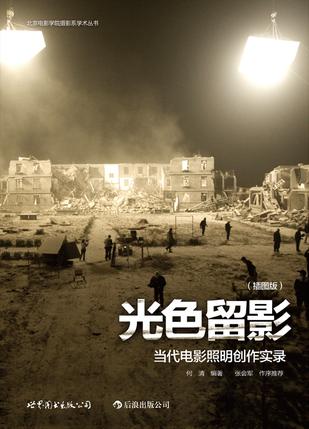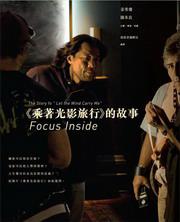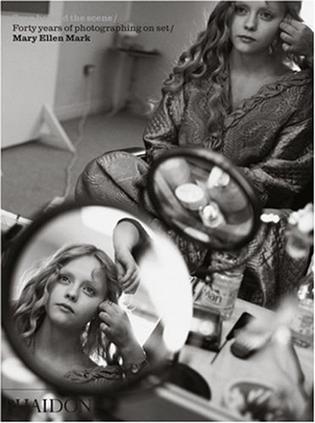欢迎来到相识电子书!
标签:电影
-
影像本体论
新世纪电影学论丛。 本书是一部关于电影本体论研究的著作。从电影创作的六个主要方面——剧本、导演、摄影、录音、美术及表演来论述电影。本书既有研究者对电影创作的实践分析,也有创作者本身对创作过程的经验性论述。本书研究的电影对象,主要以中国电影为主,也涉及了世界电影的精华。全书以切实具体感性的方式论述了整个电影的创作过程,并企图通过对电影各个方面的研究论述,让读者能系统地认识电影。 -
影视技术概论
《影视技术概论》(修订版)作者李念芦,女,北京电影学院教授,浙江传媒学院特聘教授。有译著《电影摄影与照明设备》和《影视制作者指南》,著作《影视技术概论》(1998),担任《中国电影专业史研究。电影技术卷》的主要撰写人,并参与《数字时代的影像制作》和《现代影视技术词典》的撰稿。 -
电影的语言
内容包括五部分:摄影角度、分镜的连续性、影片的剪接、特写、组合(取景与构图),可以说概括了整个电影语言和技法,为电影从技术到艺术的过程提供一条可行的原则和途径。尤其难能可贵的是作者凭借深湛的学养和具体的经验,采用浅易精确的方法,为电影各种技法下定义、解释和图示。作者一再强调法则的重要性,他并不反对求新求好的改变与革。法则并非不可破坏,但在破坏之前,先要懂得法则。全书体例简明,方法切实可行,值得向从事电影工作及关心电影艺术的读者郑重推荐。这是一本工具书,只要人手一册,就能拍出一部标准的电影!文内附有五百余帧精美的电影图片,是一部图文并茂的电影艺术杰作。 -
Film Lighting
"Film Lighting" is an indispensible sourcebook for the aspiring cinematographer including interviews with industry leading cinematographers and gaffers. -
镜头后面的世界
《镜头后面的世界:中国电影摄影师研究》主要研究了20世纪80—90年代在中国电影摄影创作实践中有代表性的摄影师,其中既包括王启明、许琦等40年代从影、在中国电影界德高望重的老一辈摄影师,也包括魏铎、鲍萧然、杨光远、李晨声等在中国新时期电影初期创造了辉煌的老一辈摄影师,还包括曾念平、张艺谋、顾长卫、侯咏、吕乐、穆德远、张黎、马德林等一批在中国电影走向国际影坛时做出了卓越贡献的优秀摄影师。他们的艺术成就,成为了中国电影摄影艺术发展史上时代的标志。 -
The Filmmaker's Eye
This is the only book that combines conceptual and practical instruction on creating polished and eloquent images for film and video with the technical know-how to achieve them. Loaded with hundreds of full-color examples, The Filmmaker's Eye is a focused, easy-to-reference guide that shows you how to become a strong visual storyteller through smart, effective choices for your shots. After a short introduction to basic principles, a variety of shots are deconstructed in the following format: Why It Works: an introduction to a particular type of shot How It Works: callouts point out exactly how the shot works the way it does--the visual rules and technical aspects in action Technical Considerations: the equipment and techniques needed to get the shot. Breaking the Rules: examples where the "rules" are brilliant subverted This book: Helps you make smart visual choices with this quick, focused, and visual guide to cinematic composition. Shows you how to master the rules, then break them. Includes examples and discussions from a range of international films. Amazon Exclusive: A Letter from Gustavo Mercado on The Filmmaker’s Eye: Learning (and Breaking) the Rules of Cinematic Composition Dear Amazon Readers, Although there are other books out there that deal with the principles of visual composition, I always wanted to have a guide that specialized in the specific requirements that are inherent to the composition of shots intended for telling stories with moving images, also known as cinematic composition. The reason for the differentiation is simple: the composition of shots for movies has developed its own set of conventions, sometimes appropriating concepts from other art forms (like painting or still photography), but also creating its own aesthetic principles and visual language because of its unique characteristics (the fixed size of the frame, the movement of the subject and/or camera, the technology used to capture images, the way images are shown in conjunction with other images, etc.). As you can probably guess, I never found such a guide, so I decided to write The Filmmaker’s Eye: Learning (and Breaking) the Rules of Cinematic Composition to fill the gap in this critical area of filmmaking. This book combines, for the first time, a specialized, focused guide to the most common and basic shots of the film vocabulary, from the extreme close up to the extreme long shot (also including chapters on the over the shoulder, macro, establishing, and moving camera shots). The Filmmaker’s Eye examines the main aspects that make these shots work: the rules of cinematic composition used in their creation, the techniques and equipment necessary to implement them, and their most common narrative function as shown in examples from mainstream, independent, and world cinema. This approach allows you to understand not only why a particular shot type is usually composed in a certain way, but also how it is used to convey meaning and how to shoot it whether you are working on film or HD video. It is my sincerest wish that this book will help deepen your understanding of cinematic composition, whether you are on a film shoot setting up your next shot, or just enjoying one of your favorite movies. Have fun! --Gustavo Mercado Amazon Exclusive: Top Ten Tips from Gustavo Mercado to Improve Your Cinematic Compositions Use a director’s viewfinder, a still camera, or any other instrument that allows you to create a frame to see the world around you. Good compositions work not only because of what is included in the frame, but also because of what is left out of it. Using any device (even your hands) to create a frame will allow you to train your eye and better understand the visual relationships of the elements contained within it. Know what your lenses can and cannot do. The lens you choose can radically alter the visual relationships between elements in your frame; understanding how different lenses affect space, the look of your subjects, and the amount of light you can work with is fundamental if you want to have complete control over your images. Use depth of field as a creative element of your composition. Choosing what is in and out of focus is one of the most powerful ways to control the information contained in your frame, and therefore shape what an audience gets out of your compositions. Have a clear understanding behind the narrative function of your composition. A good storyteller knows how to emphasize certain moments in a story and details in a frame. It is imperative that you understand the dramatic purpose behind the moment you are capturing so that you can arrange the visual elements within the frame accordingly. Ask yourself: what do I want the audience to get out of this particular shot and how can I make it express that? Know the basic rules of composition and why they work. While this might seem obvious at first, the key here is not only to be familiar with the rules, but also to understand how and why they function, in essence, why did they become rules in the first place? Only when you know the concept behind the rule can you apply it in an expressive way. Learn how to break the rules. Every rule was created by individuals not following the rules; somebody decided to place a camera really close to a subject one day and gave birth to the close up. Of course, breaking the rules intelligently only works after you learn them (see previous tip)! Be familiar with the limitations and advantages of all your equipment. Creating visually compelling compositions requires not only your artistic insight, but also your technical skills. You may have an amazing composition in your mind’s eye that gets completely undone by the time you shoot it because you were unaware your camera could not run at a particular frame rate, or you did not have enough lights to get the look you wanted. Keep in mind how each individual composition will function when juxtaposed with the rest of the images in your film, and be aware of how their interaction adds meaning as a whole. Whether you intend to or not, your story will have an image system at work, so you should have a plan for how every composition you create fits within this framework. Make it a habit to scan the entire frame before you roll camera. Even experienced directors of photography fall into the trap of getting so caught up by a single aspect of a composition that they forget to look at every visual element in the frame, often ruining what would have been beautiful shots. Do your research. I find it extremely helpful to create a portfolio of images in preparation for a project. It can include pictures taken from magazines, examples from still photography books, paintings, other films, and any other image that you feel captures the tone, mood, and visual palette you want to implement for your film. -
电影镜头入门(插图修订第2版)
电影制作基础全图解 每位电影初学者都应掌握的主要电影制作常识 ★ 化繁为简,汇上百种电影制作技巧于一册,让您轻松认识电影技巧。 ★ 囊括150多种电影制作技巧,涵盖现场拍摄、后期制作各个阶段。 ★ 列举350余部经典影片参考片目,以更专业的视角边看边学。 ★ 辅以200多幅故事板插图,一目了然读懂基本镜头语言。 【内容简介】 本书为电影爱好者、初学者提供一条了解、认识、学习电影制作常识的捷径。作者提出通过观看影片来学习电影镜头语法的观念,并化繁为简,归纳、总结了电影拍摄过程中各种最为常见并有效的镜头技法,包括基本电影技巧、构图技巧、升降技巧、运动镜头技巧、视点技巧、摄影机技巧、剪接技巧等。作者运用最容易为读者理解的方式阐释每一种技巧的概念、用法及效果,并列举出运用此种技巧的相关影片场景。另外,本书请来专业画师,为书中的电影技法配置了相应的故事板插图,帮助读者更为直观地理解、掌握电影制作的秘密。 【推荐语】 《电影镜头入门》这本简单、快捷的指南是你学习电影最好的起点。配合精彩的故事板插图,构图、摄影机移动、剪辑等技巧一下子都变得容易理解了,这种方式充满情感,并符合初学者的心理。在本书中,有各种不同类型的影片被当作范例。这是为电影初学者和爱好者准备的一本伟大的参考书。 ——Douglas Bankston,《DV杂志》主编 《电影镜头设计》使复杂的电影镜头语法得以有效的简化。读它,可以让一个对电影一无所知的门外汉走进电影制作的专业领域。所以,在准备拍摄你的作品前,请先读这本书吧。 ——Matthew Terry,编剧 《电影镜头入门》是电影初学者最好的选择,并且如果你致力于打破陈规成为该领域内的先锋的话,这本书会给你很多启发。本书以最基本的电影制作概念为基础,并有许多范例,便于阅读、查阅。 ——Paul Clatworthy,PowerProduction故事板软件技术总监 《电影镜头入门》为观众解释了电影中的镜头是如何被选择、运用以及所起的效果,并解释了这样做的原因。为各种不同的技巧进行概念化的分解是本书作者的一大创举,这对进一步学习电影制作十分有帮助。 ——Ross Otterman,导演 《电影镜头入门》巧妙地将复杂的议题简单化,十分便于初学者理解,并配有简单易懂的插图。作者的这本书对于想要更上一层楼的电影制作者打开了启蒙之门。 ——Catherine Clinch,出版家 -
Motion Picture and Video Lighting, Second Edition
Motion Picture and Video Lighting , Second Edition, is the indispensable guide to film and video lighting. Written by the author of the industry bible Cinematography , this book explores technical, aesthetic, and practical aspects of lighting for film and video. It will show you not only how to light, but why. Written by an experienced professional, this comprehensive book explores light and color theory, equipment, and techniques to make every scene look its best. Now in full color, Motion Picture and Video Lighting is heavily illustrated with photos and diagrams throughout. This new edition also includes the ultimate 'behind the scenes' DVD that takes you directly on a professional shoot and demonstrates technical procedures and equipment. In addition, 20 video clips include lighting demonstrations, technical tests, fundamentals of lighting demos, and short scenes illustrating different styles of lighting. * The definitive book on film and video lighting * Now in full color, with hundreds of illustrations and diagrams * NEW ultimate DVD including "behind-the-scenes" video, lighting demonstrations, technical tests, fundamentals of lighting demos and so much more -
制造的影像
《制造的影像:与十五位电影人对话数字技术》以访谈形式记录和揭示了现阶段处于最前沿的电影专业人士的思考和实践的经验,是从应用理论的角度研究电影数字技术的发展和电影观念的演进,也是对近十年中国电影数字化制作经验的总结。 -
大师场景:导演、编剧、剪辑师必知的顶级场景转换术
《大师场景:导演、编剧、剪辑师必知的顶级场景转换术》是由澳大利亚导演杰弗里·迈克尔·贝斯著作的讲述影视作品场景转换艺术的书籍,是世界上第一本论述场景转换的艺术意义与创作手法的电影书。 作者紧紧把握住“场景转换乃电影艺术核心”这一概念,介绍了景物过渡、交通场景过渡、拼贴场景、二元对立、音乐运用等场景转换的实践手段。 全书按照场景转换的实践手段划分章节,读者可以从第1 章开始阅读,也可以按需重点查阅所需内容。每一章都按照编剧、导演、剪辑师三种不同的电 影职业给出阅读提示。同时,《大师场景:导演、编剧、剪辑师必知的顶级场景转换术》还附有上百部电影的实例与插图说明。 《大师场景:导演、编剧、剪辑师必知的顶级场景转换术》不仅适合普通电影爱好者、初涉影视行业的电影新人阅读,对于已经拥有工作经验的影视工作者也是一本不可多得的必读书籍。 -
影视导演技术与美学
着眼于应用的超强实践性:凡属导演职责范围之事,既有理论的阐释,也有实践的解说,还有源于影视一线的个案分析和巩固练习: 放眼于创新的思想前瞻:《影视导演技术与美学》对前辈学人的经验、技术和观念极其务实而富有条理地进行了厘清、界定和重新审视。一切的一切,除了传承影视精华的目的外,也是为有心致力于此者开拓影视创新之路; 别出心裁的编排:《影视导演技术与美学》犹如一位引导您纵览整个影视与导演流程的老师,因为《影视导演技术与美学》就是按照实际影视导演流程来安排的。 -
影视光线艺术
光作为影视语言的元素,是摄影师表意的手段。光影结构在造型中起到重要的作用。在照明实践中,外景与棚内环境、人物与实景光线的处理都有相应的方式。影视创作中,光线形成的调子与光的衔接直接影响到艺术表现力。本书援引了国内外大量影视佳作实例,如《罗生门》、《雁南飞》、《第三类接触》、《危险的人物》等,结合作品风格详细分解镜头的光线奥秘,还专门介绍了电视演播厅的光线处理。书末附有多幅影视案例的彩图。 -
电影剪辑技巧
《电影剪辑技巧》对于世界各地电影界的新“学派”,对于影片剪辑方面的新方法作了研究和报道,特别是作者概括地总结了新浪潮派电影和个性电影的艺术表现形式。作者列举了特吕弗、戈达尔、雷乃和安东尼奥尼四位著名导演,并比较详尽地讨论了他们四种不同的电影风格。事实上,这四位导演所采取的不同的艺术表现形式,成为个性电影中的四类典型流派。本书不仅是提供给我们的专业剪辑工作人员使用的学习参考书,同时也可以提供给电影导演和编剧在业务的探讨中作一些有益的参考。通过本书,我们不仅可以了解一些电影专业知识,也可以进一步了解一些现代电影的发展趋向。 -
影像造型的视觉构成
本专著采用反传统处理方式,书中所涉及的电影摄影艺术创作问题,没有循序渐进地按章、节进行论述,而是选择与锁定了电影摄影创作中较为关键的问题,以专项论述的形式,以问题的提出开始,以观点的阐述为论述的方法。《影像造型的视觉构成:电影摄影艺术理论》的理论研究,紧密结合了当前电影摄影创作中的技术、艺术、技巧、观念和电影摄影的教学,很多的观点、看法、论述、思想,具有很强的个人价值取向和很强的个人研究成分,更有其重要的学术意义和理论价值。 《影像造型的视觉构成:电影摄影艺术理论》对电影电视摄影创作专业人士、对影视理论与创作专业在学的研究生、本科生的学习有很大的帮助,对影视理论研究人员具有借鉴作用,是电影摄影理论研究的一本有价值的专业参考书。 -
蒼井洋菓子店~大好きスイーツ・ベスト88~
映画『洋菓子店コアンドル』に主演し、パティシエ役に挑戦した女優の蒼井優が、自らこれまでに蓄積したスイーツ情報を厳選し、紹介する書籍「蒼井洋菓子店~大好きスイーツ・ベスト88~」がマガジンハウスより発売されることになった。 劇中の画像でも見られるように、パティシエのコックコートがお似合いの蒼井さんだが、自他ともに認めるお菓子好き。今回発売されるスイーツ情報本、その名も「蒼井洋菓子店」では、そんな彼女がこれまでに実際に足を運んだり、取り寄せたりして蓄積した様々なスイーツの情報、大好きなパティスリーやとっておきの味を惜しみなく紹介する! “蒼井優とスイーツ”と称して蒼井さんのお母さんの手作りバナナケーキのことや、映画でのパティシエ体験について語るほか、“幸せスイーツテイスティング”では、行列ができるスイーツやお取り寄せスイーツを彼女が本気で試食! “エレガントなスイーツマナー”の章では、崩れやすいミルフィーユを美しく食べるコツなどを紹介する。インタビューに加え、オフショットも満載。スイーツを前に幸せそうな蒼井さんの笑顔にドキッ! -
光影世界-电影摄影创作
《光影世界:电影摄影创作》经验与创作、批评与阐释两篇对电影摄影创作进行系统的论述。经验与创作部分利用问答的方式对美国最佳摄影师戈顿·威利斯、比尔·巴特勒、哈斯凯尔·韦克斯勒等人进行访谈。批评与阐释部分则对用光写作的大师斯托拉罗、纪实派摄影巨匠内斯托·阿尔芒都等电影摄影大师进行评论。 -
影视摄影构图学
本书是一本影视摄影专著。全书共五章,分别论述摄影造型表现手段、光线处理、摄影构图及影视各片种摄影创作的基本理论和具体技巧、方法。本书在保持专业理论论述完整与系统的基础上,尽可能广泛提供摄影创作上的不同观念、流派、创作方法,并且大量分析了中外影视摄影创作实例,特别是书中附录了相关片种具体摄影创作实例文章。这将使本书创作理论实在化,摄影语言运用具体化,也益于读者学习。 -
光色留影
国内一线电影摄影师、灯光师独家创作谈 北京电影学院摄影系历时三年采访、整理、编写 收录《一九四二》、《富春山居图》、《画皮2》幕后拍摄资料 ------------------------------------ 这部学术著作的出版,是在中国电影照明领域最需要和最缺乏资料的情况下完成的,通过访谈的方式对第一手的创作资料和经验进行整理和挖掘,完全是第一线照明实战经验的体现,对电影摄影、照明创作有巨大的参考价值。 ——中国电影家协会副主席、北京电影学院院长 张会军 ------------------------------------ ★ 北京电影学院摄影系历时三年采访、整理、编写 ★ 具有针对性与专业性的访谈设计,解决拍摄现场的实际照明难题 ★ 一线电影摄影大师独家分享多年创作经验,如吕乐(金鸡奖最佳摄影)、赵非(金马奖最佳摄影)、黄岳泰(九次获得金像奖最佳摄影)等 ★ 涉及最新片例,如《画皮2》、《一九四二》、《富春山居图》,难得一见的幕后资料 ★ 图文并茂,全彩印刷,包括大量灯位图、效果图、片场工作照 ------------------------------------ 本书是北京电影学院摄影系历时三年采访整理而成的电影摄影创作访谈,受访者皆是当下最一线的电影摄影师、广告摄影师、灯光师,如吕乐(《一九四二》)、赵非(《让子弹飞》)、黄岳泰(《画皮2》)、邵丹(《富春山居图》)等等,通过极具专业性和针对性的访谈设计,介绍一线创作者的创作观念,以及多年来积累的个人经验与实用技巧,帮助业内工作者、影视或广告制作专业的学生处理实际创作中可能面临的问题。 本书最大的特点是独家性和务实性,编者汇集了国内最一流的资源,针对电影照明领域中最迫切的问题发问,对第一手的创作资料和经验进行整理和挖掘。第二个特点是案例新颖、图文并茂,大量说明性的灯位图、效果图和难得一见的片场工作照,生动阐释了具体的布光方法。无论对电影教学还是创作实践,或者作为一份当下电影创作的文献资料,这本书都有着十分珍贵的价值。 -
Focus Inside:《乘著光影旅行》的故事
「我拍攝畫面的時候,只是想表現一個景物依舊、時光流逝、人事已非,生命還有希望,一點點光。」 --李屏賓 攝影可以留住什麼?電影可以把人帶到那裡?人生還可以走出怎樣的意義?紀錄片《乘著光影旅行》如此提問。 李屏賓,一位深受侯孝賢、王家衛、陳英雄、是枝裕和等中外導演信賴的攝影大師,從《策馬入林》、《童年往事》、《戀戀風塵》,到《海上花》、《心動》、《花樣年華》、《不能說的祕密》、《空氣人形》等影片,都可見到他精心設計捕捉的畫面。如果說,電影是一種光影的藝術,攝影師正是掌控影像魅力的巨匠,賦予現實詩意的眼光,讓我們驚喜、沉迷、感動。李屏賓入行三十年,從來不是鋒芒畢露的性格,始終要求自己在工作上思考與冒險,逐步建立獨樹一幟的風格、從台灣電影圈發光到世界影壇。 兩位導演姜秀瓊、關本良,花費三年時光,隨李屏賓的工作行程踏過台港中日美挪威,走訪李屏賓與他的工作夥伴、家人,剪輯成90分鐘的紀錄片《乘著光影旅行》。全片呈現這位攝影師匆促晃蕩的身影,幫觀眾拾回每格底片夾縫間,遺落下的記憶碎片。我們遊走於電影世界的真實與虛幻,親見李屏賓如何以他的眼睛和心靈,追趕快要流失的光色,變換成每個導演的意象,每一個觀眾的心聲。在光影之外,我們還瞥見李屏賓細膩的情感、對命運的謙卑柔軟,與他長年離家對親人割捨不斷的連結…… 《乘著光影旅行》讓我們用嶄新的角度認識電影和攝影師,由兩位導演取得的豐富訪談內容,重新改寫架構而成的這本圖文書,企圖更深入描繪李屏賓鏡頭內外的美麗與哀愁,更翔實地呈現他的技藝與生命歷程,感受一個電影工作者、一名職人的美麗視野,同時也是一位男人的不平凡心靈。 -
Seen Behind the Scene
Acclaimed photographer Mary Ellen Mark (b.1940) has secured exclusive backstage access to some of the most famous actors and directors in film history Captures life on the sets of legendary movies Apocalypse Now and One Flew Over the Cuckoo’s Nest, as well more recent productions such as the Oscar-winning films Moulin Rouge, Babel and Sweeney Todd Includes powerful portraits of such celebrated actors as Marlon Brando, Catherine Deneuve, Jack Nicholson, Cate Blanchett and Johnny Depp The photographer’s most popular and accessible work, these engaging, mostly unpublished, pictures provide a rare portrait of these larger-than-life personalities in unguarded moments Features texts by a range of high-profile film industry professionals, including Francis Ford Coppola, Helen Mirren and Alejandro Gonzälez Inarritu, which include witty and revealing anecdotes about life ‘behind the scenes'
热门标签
下载排行榜
- 1 梦的解析:最佳译本
- 2 李鸿章全传
- 3 淡定的智慧
- 4 心理操控术
- 5 哈佛口才课
- 6 俗世奇人
- 7 日瓦戈医生
- 8 笑死你的逻辑学
- 9 历史老师没教过的历史
- 10 1分钟和陌生人成为朋友

